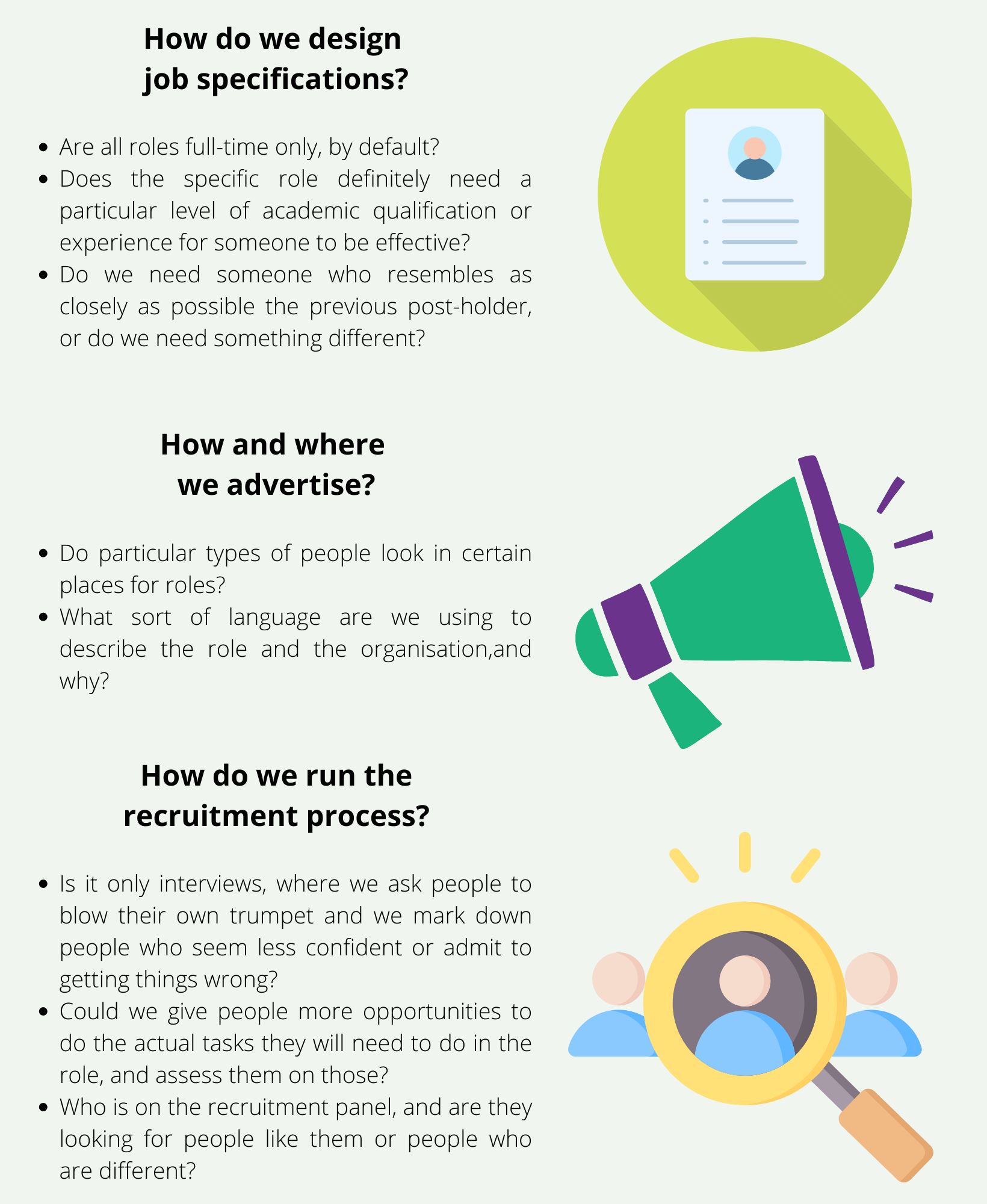8 August, 2022
The gender gap
Despite 69.5% of UK teachers being female, women are less confident than men that all staff are treated equally.
Equality, Diversity and Inclusion – The Gender Gap
Here is the 4th installment in our equality, diversity, and inclusion (EDI) series, in which we will explore the gender gap within schools in England.
The data we talk about during this post comes from our extensive study of equality, diversity, and inclusion amongst school staff which we ran in 2020-21. During this research, we reviewed the experience of over 16,000 staff members from 381 schools, 33 central trust teams, and 50 trusts. We asked staff about the whole workplace experience, from recruitment to on-the-job experiences and advancement, looking at how people with different protected characteristics feel about their time working in schools and trusts.
Interestingly, our research noted that across all staff, the majority feel that their workplace is committed to promoting equality, diversity, and inclusion. However, looking at different groups in more detail it was clear the experience is not the same for everyone, so below, we’ll assess the gender gap further.
What does the gender gap look like among England's school staff?
Despite (according to BESA) 69.5% of UK teachers being female, our research showed that in England, women are less confident than men that all staff are treated equally, with 80% of men feeling confident compared to 74% of women.
HOW CONFIDENT ARE YOU THAT ALL STAFF ARE TREATED EQUALLY IN YOUR WORKPLACE?
It is noteworthy that this is the case even in an environment where women vastly outnumber men. As Imogen Senior outlines in a blog for WomenEd:
The 2020 National Office of Statistics data indicates that 75% of classroom teachers are female, but only 67% of Headteachers are female, that gap however shows a huge variance across the sector. According to TES 2019 data, in Secondary schools 63% of the teaching staff are female but they make up fewer than 38% of Headteachers. In primary schools whilst only 14% of the teaching staff are male, 27% of primary Heads are men. This difference is stark and the data does not begin to analyse the anecdotal experience of women in schools, where middle leadership and senior leadership roles too often are disproportionately filled by men.
What are the main differences between male and female staff?
One of the key findings from our EDI research into the day-to-day experience of school staff found that three-quarters of men think it is easy to report discrimination, compared to only two-thirds of women feeling it was easy to do.
HOW EASY OR DIFFICULT IS IT TO REPORT DISCRIMINATION USING THE EXISTING PROCEDURES IN YOUR WORKPLACE?
A recent article by Tes, reported that 3/4 of female teachers experience misogyny in schools, which may show that not only do women feel they can’t speak out when they need to, but discrimination happens too.
And if they were to raise concerns internally, 85% of men felt confident that the leadership team would take action, compared to 80% of women. Though the difference in these experiences may not feel enormous, it does show that there’s still work to be done or that there is more to the gender gap experience than meets the eye.
HOW CONFIDENT ARE YOU THAT THE LEADERSHIP TEAM WOULD TAKE ACTION TO PREVENT DISCRIMINATION, IF CONCERNS WERE RAISED INTERNALLY?
When assessing the gender gap in relation to promotions, 71% of women would feel comfortable applying for a position they are qualified for. This is lower than their male peers, of whom 77% said they would feel comfortable applying. Again, this data matches other data in this industry, with Tes earlier this year also remarking that female teachers are significantly less likely to become headteachers. Interestingly, such a sentiment hasn’t changed since The Guardian also reported about the lack of gender diversity in headteachers, back in 2015.
HOW COMFORTABLE WOULD YOU FEEL APPLYING FOR A PROMOTION THAT YOU WERE FORMALLY QUALIFIED FOR IN THIS ORGANISATION?
Men are also more confident in their position in their workplace. For instance, three quarters of men feel confident that decisions around responsibility allocation are made without bias – compared to two thirds of women. As Ambition Institute reflected on this bias in our report, “As is common in other sectors, white men working full-time generally report higher levels of satisfaction with the fairness of these types of processes.”
HOW CONFIDENT ARE YOU THAT DECISIONS IMPACTING PROMOTIONS ARE MADE WITHOUT BIAS?
What does this mean for trust leaders looking to close the gender gap?
Using our data, we aim to shed light on issues of equality, diversity, and inclusion to help you better understand people’s experiences and make better strategic decisions. As part of our report, Ambition Institute recommend thinking about the following:





